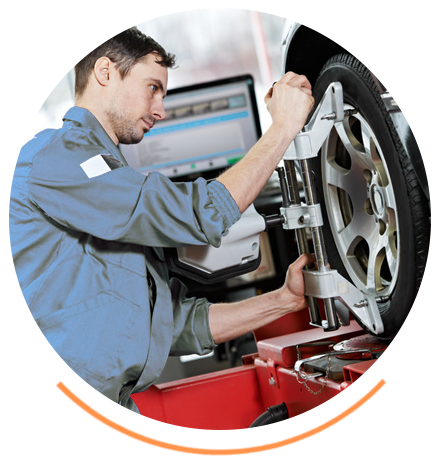
Keeping You On The Road
Make sure your vehicle's alignment is correct
When a vehicle's alignment is not correctly proportioned, two issues may happened. Driving becomes more expensive and also more dangerous. In fact, driving in a vehicle without proper alignment is an expensive risk. Not only does this decrease gas mileage, but it also stresses other aspects of the vehicle, including steering equipment and overall structural damage. Adjusting the angles of the wheels so they are perpendicular to the ground and parallel to each other is how we ensure your vehicle is properly aligned.
Stay out of a dangerous situation
Driving in a vehicle without proper alignment can cause the car to pull or drift away from a straight road and potentially result in a fatal situation. Another bad result of poor alignment? Excessive tire wear, which can lead to tire blow-outs and poor traction.
So, how does this happen?
Your car's alignment is impacted by several different aspects. A major red flag that may require our computerized alignment service is a major or minor collision that results in damage to your vehicle's frame. Alignment problems don't simply happen by collisions and accidents though; problems can arise by something as minor as driving over a pothole or even grazing over a curb. Look for these symptomatic alignment variations to determine if you need our services:
Caster is used to describe the angle of a steering pivot, as seen from the side of the vehicle and measured in degrees. Caster alignment plays a large role in evaluating the "feel" of steering and the stability of high-speed transportation. Three to five degrees of positive caster is typical for most vehicles, and lower angles for heavier vehicles are used to keep steering comfortable. A faulty caster angle will cause loose or difficult steering.
Camber is the angle of the wheel in relation to a vertical direction (seen from the front or rear of the car). A negative camber measurement occurs when a wheel leans toward the chassis; a positive measurement points the wheel away from the car. An ideal camber angle assures optimal tire efficiency, proper steering control, and a precautionary "anti-roll" directive that engineers have adapted into vehicle designs to negate the effects of a body roll. A faulty camber angle will create pulling and tire wear.
Like camber and caster, toe is measured by degrees and is another basic aspect of suspension tuning. When a pair of wheels are placed with their front edges pointed toward each other, the pair is defined as "toe-ins." If the front edges point away from each other, the pair is defined as "toe-outs." Essentially, a toe changes the distance between the front and back of the rear tires, and a faulty toe angle will wear down your tires.
When your wheels are properly aligned, you'll get:
- Tires that last longer
- Easier steering
- Improved gas mileage
- Smoother ride
- Safer, more secure driving
